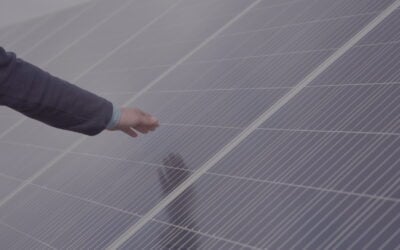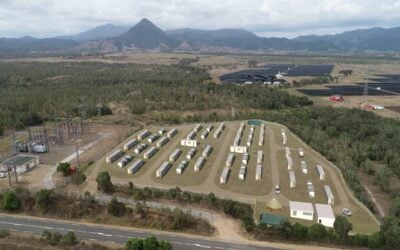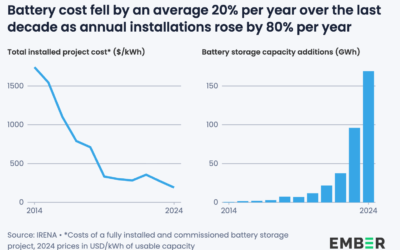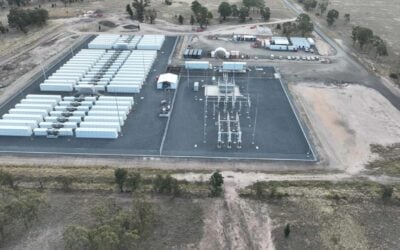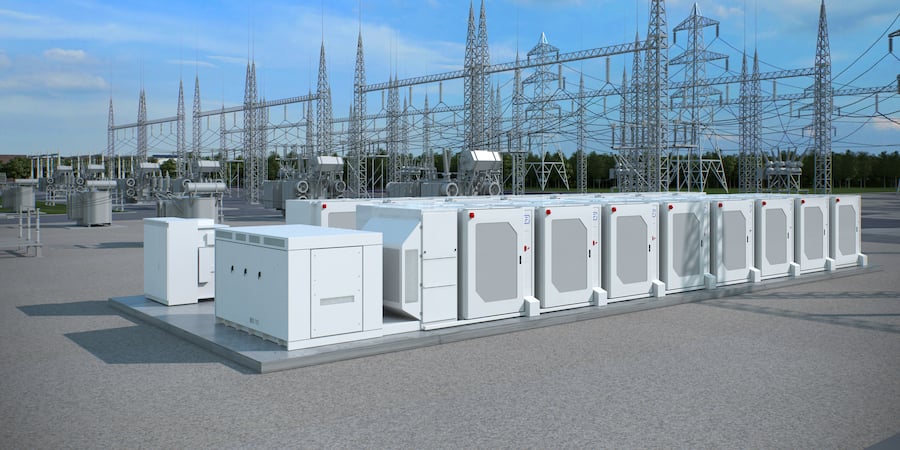
Fluence’s initial public offering (IPO) raised just under a billion dollars, with all available shares of the energy storage company’s Class A common stock snapped up as they listed on the Nasdaq Global Select Market.
In total, proceeds of US$998,200,000 were generated. This is because although the 31 million shares sold to the public at US$28 each raised US$868 million, underwriters decided to immediately exercise their options to purchase an additional 4.65 million shares in full.
The IPO was only open from 28 October until 1 November. At the end of the first day of trading their value had jumped 25% to US$35 each. They went as high as US$37.82 yesterday but came back towards the US$35 mark as of the time of writing.
In an interview with Energy-Storage.news last week, company chief financial officer Dennis Fehr said Fluence believed going public would be the best way to accelerate its growth “and enable greater adoption of renewable energy and decarbonised technologies”.
Try Premium for just $1
- Full premium access for the first month at only $1
- Converts to an annual rate after 30 days unless cancelled
- Cancel anytime during the trial period
Premium Benefits
- Expert industry analysis and interviews
- Digital access to PV Tech Power journal
- Exclusive event discounts
Or get the full Premium subscription right away
Or continue reading this article for free
Pricing of the IPO raised the company’s valuation to about US$4.7 billion. In its IPO prospectus, Fluence quoted BloombergNEF analysts’ figures that the global non-residential energy storage market is forecasted to grow significantly: from 0.6GW a year in 2015, then 3.8GW in 2020 to 34.2GW annual installations by 2030.
However, the company added that it believed that industry forecasting is conservative, not only from BloombergNEF but from other analysts too, underestimating the true value of the opportunity.
CFO Dennis Fehr explained to Energy-Storage.news that among the reasons for this is that such analysis is extrapolated largely based on the existing business models and markets that energy storage companies have been able to capture opportunities from.
Fluence sees more opportunities coming in areas such as energy storage as transmission assets and energy storage as ‘virtual dams’ — maximising the value of grid infrastructure and renewable energy by allowing electrons to flow or be stored as needed.
The company — and others — have already started working on their first projects in these nascent areas, alongside more mature market opportunities such as solar-plus-storage power plants and high power batteries for ancillary services.
Joint lead book-running managers on the IPO are JP Morgan Securities, Morgan Stanley, Barclays Capital and Bank of America Securities. Citigroup Global Markets, Credit Suisse Securities (USA), UBS Securities, Evercore Group, HSBC Securities (USA) and RBC Capital Markets joint book-running managers and co-managers include Nomura Securities International and Robert W Baird & Co Incorporated.
Ahead of the IPO, finance expert Charles Lesser at clean energy transaction advisor group Apricum said it would help raise the global profile and credibility of energy storage, as well the digital optimisation of renewable energy assets, an area Fluence is also active in.


